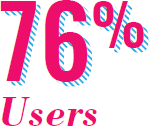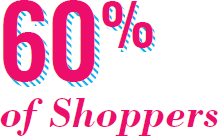
“Unless you're Kanye West, no one
believes that your plain white T-shirt is
fundamentally different from any other.”
Part Two: Chapter 8
Differentiate Products
By Craig Kielburger
Add two scoops of purpose, stir, and stand out
PacSun is an uber-cool retail clothing brand marketed to teens, with headquarters in Anaheim, California. It's a destination for style that is effortlessly L.A., offering maxi skirts, floppy hats, and billowy dresses, as if the only occasions worth dressing for are beach parties and music festivals. It also carries a number of licensed product lines, including ME to WE Artisans, as well as designs by Kendall and Kylie Jenner. This is the most Marc and I will ever have in common with the Kardashian clan.
A few years back, Marc spoke at a Santa Monica conference for PacSun's general managers. It was like a fashion trend convention, with everyone clad in skinny jeans, Hawaiian shirts, and Buddy Holly glasses. They eyed Marc with detached looks. He walked in wearing his cross-country flight uniform of ergonomic sneakers, Dad jeans, and sport-coat-over-tee. Marc was there to help these fashion industry insiders solve a clothing problem: How to elevate the plain white T-shirt?
Marc and the PacSun team discussed a co-branded fashion line called The ME to WE Essentials that would consist of women's basics like white tees, tank tops, and other staples. This was an audacious venture. In this space, we would be competing with every other retailer peddling a tee. And unless you're Kanye West, no one believes that your plain white T-shirt is fundamentally different from any other. These products are too similar to distinguish beyond price point.
White T-Shirts by the Numbers
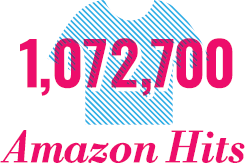 1,072,700 Hits on Amazon.com for “white T-shirt.” |
 US$340: Price of Saint Laurent's slub cotton-jersey T-shirt. |
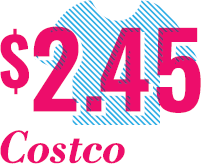 US$2.45: Price of a Costco's Kirkland Signature 100 percent Pima Cotton T-Shirt (sold in packs of four). |
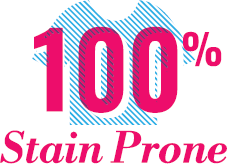 100 percent: Chance of spilling coffee or mustard on a brand-new white T-shirt. |
Marc had a hunch that we could differentiate our basics line from all others on the market, with a revolutionary tracking system our team had developed that could identify the purpose in any product.
The idea had come to me a while back, standing in line at a grocery store. The cashier asked, “Would you like to donate $2 to charity?” Um, maybe. Charity? Any charity in particular? Can you tell me anything about the social impact? After a puzzling exchange, it was clear that she had no idea where the money would go; no one bothered to offer even a basic explanation to this person on the frontline, responsible for engaging customers in the company's cause. She sighed, probably thinking to herself, I work here part-time, why would I have this information?
The old cash-register charity offensive is a guilt-driven ask that drives most customers crazy. Built on superficial corporate–charity partnerships, there's little information available to consumers about the cause, and no information about how the collected money is being spent. Most often, the point of purchase is the first time that consumers encounter the cause. It preys on a person's guilt, incurs public shaming as those behind you in line are watching, and provokes that inner monologue: Is the company also supporting the charity, or just asking for my money? If I give, how is my donation going to be used?
Pressuring people to make insta-donations doesn't inform donors or create long-term supporters of the charity. Companies don't fare much better because this model often negatively affects the consumer experience. This last-minute request model has existed unchanged for decades, despite massive innovations in every other part of the consumer experience. Just think about the transformations within the past few years for payment options alone: smartphone wallets, self-service check-outs, and so much more.
Donors want transparency; they want proof and a connection to the cause. If we can track the status of a package in the mail, why can't we track a charitable donation? If I can see my accounts via online banking, why can't I see where my charitable funds go?
In an age when you can track everything on your smartphone—caloric intake, daily steps, coffee purchases, stock portfolios—you should be able to track your social impact.
The team at WE has often thought about how this could be done better. We wanted to deliver real-time proof of impact.
It was a challenge that brought together our corporate partners, our social enterprise, and our charity. We sought a solution that would benefit the charity by raising more dollars for social impact, as well as improve business outcomes for partners by enhancing the customer experience, engaging retail employees, and differentiating the product and/or the retailer to increase sales.
Our team created something unprecedented called Track Your Impact (TYI). It's an inventory tracking system, but it's so much more than that. The system leverages a product's existing Universal Product Code (UPC), those black-and-white bars unique to each product that are scanned at checkout to reveal more information. To the existing system, the manufacturer or seller can add a sticker with an eight-digit TYI code. When customers input the UPC or TYI code online, they can find out exactly what charitable impact their purchase will make. Each TYI product unlocks a unique charitable impact—whether in developing countries, delivering five gallons of clean water to a family or a package of lentil seeds for a farmer; or in developed countries, providing a curriculum resource for a local school or leadership training for at-risk youth.
Consumers can see information about their specific charitable impact, and pin-point on a map the region, village, or city where their impact is being delivered to change a life. Consumers can even opt-in to receive ongoing updates about their impact via email.
Track Your Impact
A Game Changer
82 percent of TYI consumers talk to friends and family about their purchases.
76 percent of TYI consumers strongly agree that offering products with transparent social impact proves retailers care about the community.
68 percent of TYI consumers chose TYI over similar products, even if they cost a little bit more.
—Mission Measurement Survey commissioned by ME to WE
WE launched the TYI pilot with codes on Artisans products and donations to our WE Village charity projects. So the sales of Artisans goods not only provided a fair wage to the mamas who made them, but also supported development initiatives in the villages where the women lived. And customers could track it all, typing codes into the website to pinpoint the specific village on a map, with photos and stories about the people in that community, telling why and how the impacts change lives.
We quickly realized these impact codes didn't have to be confined to our own Artisans line. Track Your Impact makes any product stand out. It brings an online edge to the in-store shopping experience, and fuses the transparency of technology with the selling power of purpose. So often companies try to sell what their products don't do: No animals were harmed, no rainforests were cut down.
The beauty of TYI is that it shows you what your purchase will do. And with sharable content that customers can take to social media. Shoppers buy the product, make an impact, meet the community affected, and share the story, like pictures of clean-water projects or facts about drought and small-hold farmers. The social media halo amplifies the brand, and invites other consumers to join. And when consumers opt-in to receive information about their impacts, at the bottom of the message they see additional products and services that deliver more impacts to change the world. All of this amplifies the cause, inspiring others to shop with impact.
If you want a real-time example, flip to the back cover of this book and enter the TYI code online.
Back to sunny Santa Monica and to PacSun, where Marc cracked the veneer of the hipster fashion crowd with these stories of impact. We gave our co-branded white tees a distinguishing feature no other retailer could offer—purpose, so transparent that customers could discover how their white tee would make a difference while they shopped. The ME to WE Essential line started with T-shirts, but quickly expanded across multiple product categories to become one of PacSun's top four apparel labels, a big feat considering the hundreds of brands carried include Nike, Adidas, and Calvin Klein.
Tracking proved that purpose could prop up the white T-shirt. It also proved an important aspect of customer behavior—shoppers will go out of their way to make socially conscious choices. Initially, PacSun assumed that customers would make a purchase, then take the product home to trace the impact. Instead, shoppers dug through piles of merchandise, brandishing their phones, inputting the codes online from the tags on a pile of identical T-shirts to find the one that gave vitamins to a child in India, or a chicken to provide eggs for a mother in Ecuador. Decisions weren't random, and not just relegated to a choice between making a difference or not. Shoppers craved a personal connection to their impact, choosing Latin America because of a family connection or school supplies because their parents are teachers.
To learn more about this impactful partnership: Click for video.
Consumers today are informed, empowered, and not easily manipulated. They want to buy the change they wish to see in the world, and so they want companies to be able to prove purpose.
Product differentiation has always been a challenge. Add the fact that the consumer landscape is shifting constantly—spending preferences, technology, ethics, retail models—and the problem increases tenfold. Product options in most categories are endless. And, as much as we worship the concept of choice and variety in our culture, science tells us that too many options diminish the motivation to buy.1 Choice and oversupply are major and growing challenges for business today. “Competition is infinite. A flat world and low barriers to entry, thanks especially to the Internet, have neutered the biggest product differentiators: price, quality, and convenience,” writes Jason Saul, CEO of the social impact consulting firm Mission Measurement.2
What if purpose is the game-changing differentiator that gives products an edge? Purpose can be the inspiration for a new venture, but it can also be used to retrofit an existing product, all the while providing a tangible social impact that consumers can see.
Carol Cone, global practice chair for international public relations giant Edelman, suggests adding “purpose” as the fifth “P” in the traditional marketing mix of product, pricing, place, and promotion. “Beyond CSR, cause marketing, or altruism,” writes Cone, “purpose is a core strategy for profit and growth based on linking an organization's reason for being to improving lives and impacting society.”4
In other words: purpose sells. Purpose is a differentiator.
Shoppers report that they are willing to pay more for products that do good. In the largest study of its kind, researchers at New York University examined a raft of consumer surveys and found that 60 percent of shoppers are willing to pay a premium for socially conscious products. Granted, it's easy to seem righteous in a survey, and many respondents likely overestimated their commitment to responsible shopping to boost their own self-esteem. Maybe only a percentage of these respondents are willing to buy the change they seek in the world. Even still, don't you want in on that? Five or ten percent of customers in the consumer packaged goods industry, for instance, adds up to billions of dollars for the brand on the right side of the premium. That's a lot of money for being on the cutting edge of recycled packaging or environmentally friendly home cleaners.5 On average, consumers would spend 17 percent more for products that came with social or environmental benefits.6 Research suggests that consumers value and prefer the promise of transparent impact.
60 percent of shoppers are willing to pay a premium for socially conscious products.
There's mounting evidence of both consumer fatigue and cynicism with traditional cause marketing. A 2015 survey by social research firm Mission Measurement found that 58 percent of respondents want to understand the impact they're having when they buy a product linked to a social cause, as opposed to simply noting the colored ribbon on the wrapper.7 Where is the money going? Who benefits? We had to make the customer understand how shampoo (or a white T-shirt) relates to international development. As consumers track their impact online, they can access further information about the cause. We find that the initial purchase of a Rafiki or co-branded T-shirt is what we call a “gateway engagement” that spurs additional interest in making a difference through service, philanthropy, or further purchases. This is why TYI works. It's not a commercial; it's a connection.
If the thought of adding a social mission to your already established brand feels daunting, know that you don't have to do purpose, or even find the cause, all on your own. Working with partners for brand credibility is nothing new. Think back to the golden age of celebrity endorsement, which, for me, peaked somewhere between Pepsi and Britney Spears and Fabio and I Can't Believe It's Not Butter. Today, it might be a nonprofit partner that boosts your business instead of a pop star.
In fact, when the quality and price of two items are similar, a brand's social purpose has become the most powerful trigger for consumer purchasing decisions. Think about that for a moment. What compels shoppers to buy isn't Britney with a sweaty can of soda. Since 2008, social purpose has consistently outpaced other considerations, even design and brand loyalty, according to a study by Edelman.8 I have witnessed this phenomenon with our corporate partners.
All else being equal, purpose is the tiebreaker.
Later on, we'll help you find your cause, plan your purpose, and reap all the benefits, with a step-by-step plan that can be used by business leaders and individuals, in the workplace or at home. (Take a peek at the chapter titled Find Your Cause if you're curious).
Changing the World, One Shower at a Time
The challenge in our PacSun partnership was to distinguish a product, the white T-shirt, that was very similar to its competitors from a consumer perspective. With the naked eye, it would be hard to tell the difference between 10 white T-shirts from 10 different companies.
On the other end of product choice spectrum was what I called the shampoo-and-conditioner conundrum.
I admit that my hair-care products consist mostly of miniature hotel freebies. On the rare occasion that I run out, I dread the endless corridor of bottles at the drugstore. This one promises to give your hair 10 percent more volume (10 percent more than what?); that one claims to repair damaged ends (are my ends damaged?). There is too much perceived difference between brands, and an excess of information. It becomes white noise. Why should I grab your bottle when I can leave the decision to the hospitality industry?
A Step-by-Step Plan
 Step 1 Make a purchase |
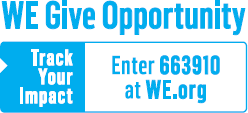 Step 2 Enter your code |
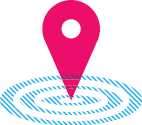 Step 3 See exactly what you gave and where—pinpoint on the map |
 Step 4 Follow your community for updates |
The answer begins on a freezing Minneapolis night in 2014, when Jonathan Atwood, Unilever's VP of Sustainable Living for North America, bumped into a group of Walgreens executives. All were waiting at the curb outside their hotel for a ride to an evening party, which happened to be for WE Day Minnesota. What started as small talk to distract from the blistering cold breaching their coats turned into a partnership that would drive both brands, jump profits, get the praise of each guy's CEO as well as the press, and do a massive amount of good. It was a chance encounter that would lead to a beautiful business relationship.
Unilever had already made a name for itself in the area of corporate social responsibility, having led the Food Producers sector in the Dow Jones Sustainability World Indexes for over a decade.9 It was a good-on-paper partner, the kind you could bring home to your parents. Walgreens is a drugstore partnered with the UK's Boots chain; with its 8,000 stores nationwide, it's a distribution giant. As a basis of comparison, for those readers outside the U.S., there are thousands more Walgreens stores than Walmart locations in America. It is a massive—and popular—chain, found in almost every community across America.
Over the next several months, teams from our three organizations put their heads together to come up with a campaign that would infuse Unilever products, sold at Walgreens, with a social value proposition that included Track Your Impact. The campaign would involve three of Unilever's flagship products: its TRESemmé, Suave, and Caress brands of shampoos and body washes. Andrea Farris, VP of Inventory Management and Supply Chain at Walgreens, reflected on the process: “Those brands aligned with the goal we were trying to achieve: while you're taking care of yourself with these products, you can also do good.”
It was a natural progression to choose clean water as the social impact these products would deliver, since personal care products are often used with and linked to water.
Want to see just how Track Your Impact works? Click for video.
In other words, if you own a restaurant, you probably want to consider hunger or food waste as a cause, over, say, animal rescue. Pick something with an intuitive connection to what you do, making it easier for consumers to link it to your brand. Again, we'll talk more about you creating your own purpose plan in Part Three.
Customers tend to respond better to cause marketing that makes an authentic connection to the core business.
So it was settled: Every purchase of one of these shampoos would provide five gallons of clean water to a child in a developing country through our charitable programs. The cause was meaningful and a logical extension of the core business.
Unilever's “GiveH2OPE” campaign ran from July 26 to September 30, 2015. It was, by all measures, a glowing success. Our estimate that 15 million gallons of water would be delivered through purchases was exceeded by 2.5 million gallons. This program literally saves lives. The United Nations cites unclean water and poor sanitation as a leading cause of child mortality. Childhood diarrhea, which is closely associated with insufficient water supply in the developing world, is estimated to cause 1.5 million child deaths per year, mostly among children under five living in developing countries.10
Watch a special school group witness the impact of clean water and the GiveH2OPE campaign in Kenya: Click for video.
Walgreens told us that the products saw double-digit sales lifts. We aren't authorized to reveal the exact numbers, but I can tell you that consumer goods companies fight hard for even a small percentage increase, and so “double digits” is basically code for kicking butt. These were already popular brands, but purpose gave them an unprecedented boost. We all expected that the campaign would lift sales, but what our partners really loved about the project was the social media halo. Working from a benchmark based on previous campaigns, Walgreens set a social media goal of 94,000 engagements on Facebook. That would have been terrific as their stretch goal. But after eight weeks, GiveH2OPE had garnered 1.7 million engagements. A Twitter engagement goal of 66,000 engagements was surpassed by almost 400,000. It would take a lot to generate more buzz on social media about personal care products than we did here. David Beckham himself would have to publicly reveal his body wash preferences to beat those numbers.
“We aspire to be a standout global CSR company. By remaining dedicated to causes, we have made a substantial impact.”
—Ornella Barra, Co-Chief Operating Officer, Walgreens Boots Alliance, Inc.
In retrospect, there were many reasons for the campaign's success. Among them, a well-aligned partnership between the manufacturer and the retailer was based on a common purpose. Because of the partnership, Unilever products got prime placement in Walgreens stores for the duration, in the coveted end-cap that juts out of every aisle and attracts foot traffic. Those with retail experience know that it's a constant battle among manufacturers to occupy that space, but adding purpose to the products convinced both companies that prime placement would move additional quantities, driving both purpose and profit. Each partner was invested in the outcome, and therefore deployed resources and strategies to ensure its success. Both Unilever and Walgreens CEOs spoke publicly about a cause that made sense for their business goals. The Chicago Tribune newspaper and other press covered the story about consumer transparency, resulting in a boost in free advertising. A partnership without purpose would have been more white noise.
If you're looking to differentiate from the competitors, look to purpose. Savvy customers are looking to help causes, so help them look to yours. In the age of product parity, use purpose to make your brand pop and make the world a better place while you're at it.


